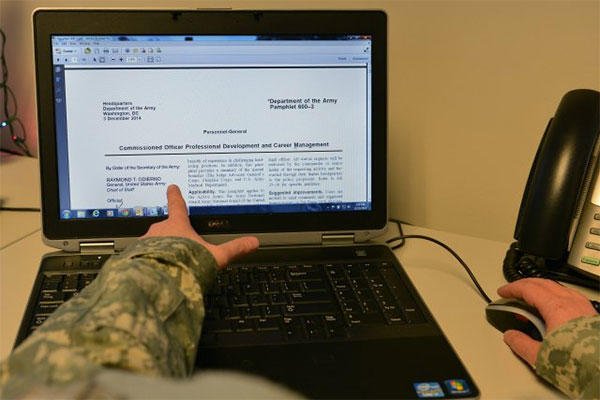WASHINGTON -- Army Pamphlet 600-3, revised this month, emphasizes the importance of broadening assignments to Commissioned Officer Professional Development and Career Management.
"It's a recognition of the fact that officers need a broader base of education," said Albert S. Eggerton, officer division deputy chief, Military Personnel Management Division, Army G-1.
"We're dealing with a world in much more 360-degree fashion than we used to be."
In addition to a revised definition of officer broadening, the latest pamphlet outlines a new competitive intermediate level education selection process, and adds a chapter on the Electronic Warfare officer, to reflect a new functional area.
"We're less linear, force-on-force oriented, (with) a lot of 360-degree threats, so officers have to be flexible, adaptable and we want to give them a basis for that, an educational basis and a branch-focused basis as well," he said.
Other changes include updated career-development models for branches and functional areas.
All officers should carefully look at the area that pertains to them, Eggerton said, since officer career timelines and career maps for every basic branch or functional area have been updated.
Officers can find the latest pamphlet on the Army Publishing Directorate's website. If they have questions, they can talk to their chain of command or a career and branch manager at Human Resources Command.
The Army is seeking to develop an officer's area of talent to its fullest potential, so the pamphlet is a "living document" that is constantly being looked at for revising, Eggerton said.
Future updates, he said, will include the Army's new cyber capabilities with its cyber branch, and changes to functional categories.
"This pamphlet is not a regulation, it's a process manual more than anything else, but it needs to document and reflect the way the Army manages its officer personnel," Eggerton said.
He also noted information systems have improved as well, so the Army can better recognize talent in both the officer and enlisted corps, he said.
"We're trying to mine that and develop that in ways that are very flexible, and allow us to engage challenges that are coming up that we just can't see," he said.




























